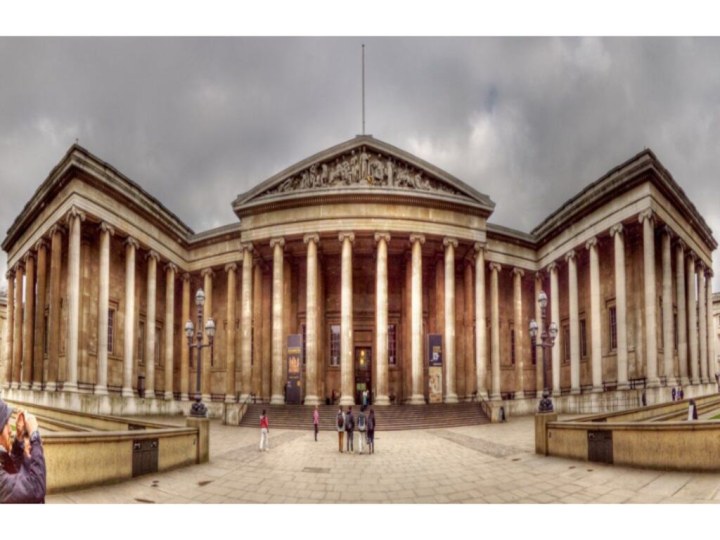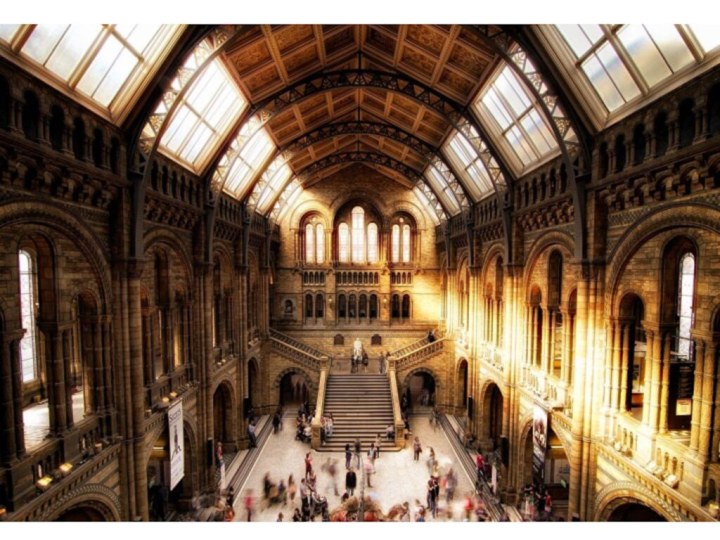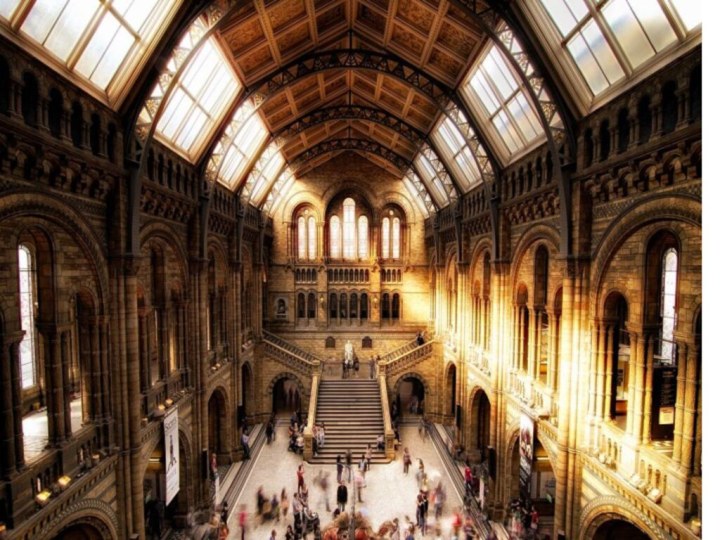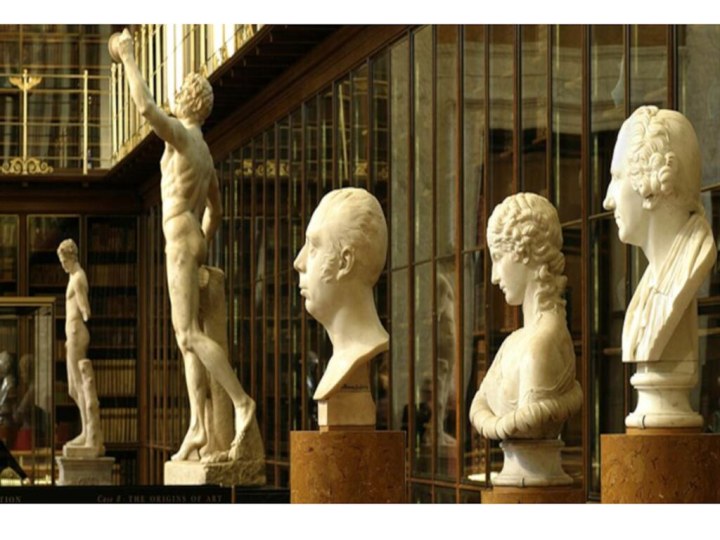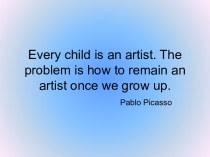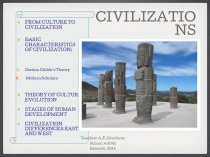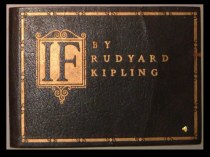Слайд 2
The British Museum in London is one
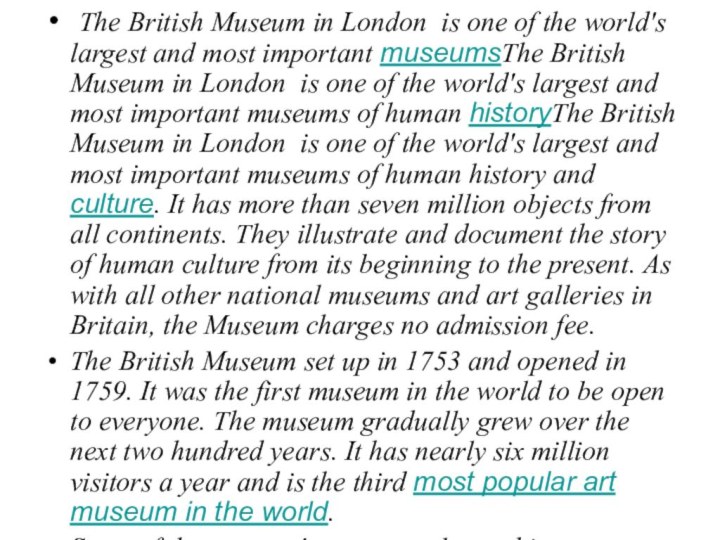
of the world's largest and most important museumsThe British
Museum in London is one of the world's largest and most important museums of human historyThe British Museum in London is one of the world's largest and most important museums of human history and culture. It has more than seven million objects from all continents. They illustrate and document the story of human culture from its beginning to the present. As with all other national museums and art galleries in Britain, the Museum charges no admission fee.
The British Museum set up in 1753 and opened in 1759. It was the first museum in the world to be open to everyone. The museum gradually grew over the next two hundred years. It has nearly six million visitors a year and is the third most popular art museum in the world.
Some of the museum's most popular and important exhibitsSome of the museum's most popular and important exhibits include the Rosetta StoneSome of the museum's most popular and important exhibits include the Rosetta Stone and the Elgin Marbles.
Слайд 3
History
The history of the British Museum began with
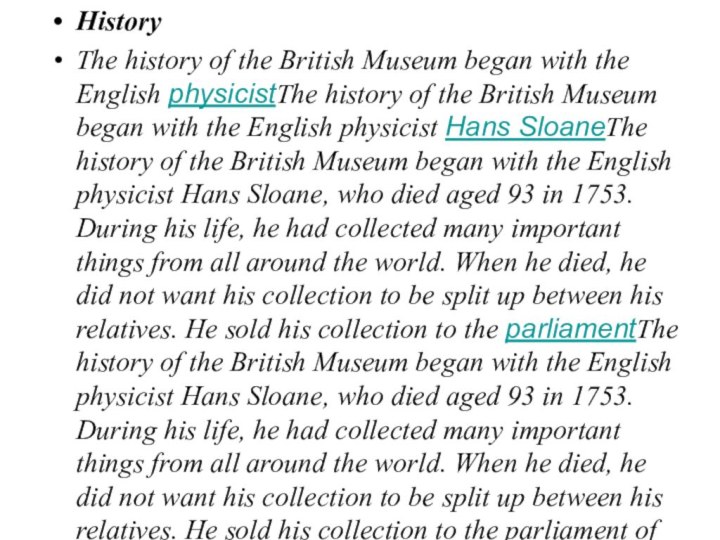
the English physicistThe history of the British Museum began
with the English physicist Hans SloaneThe history of the British Museum began with the English physicist Hans Sloane, who died aged 93 in 1753. During his life, he had collected many important things from all around the world. When he died, he did not want his collection to be split up between his relatives. He sold his collection to the parliamentThe history of the British Museum began with the English physicist Hans Sloane, who died aged 93 in 1753. During his life, he had collected many important things from all around the world. When he died, he did not want his collection to be split up between his relatives. He sold his collection to the parliament of King George IIThe history of the British Museum began with the English physicist Hans Sloane, who died aged 93 in 1753. During his life, he had collected many important things from all around the world. When he died, he did not want his collection to be split up between his relatives. He sold his collection to the parliament of King George II. The parliament set up the British Museum to hold the collection. By the time he died, Sloane had collected over 80,000 objects from all over the world including EgyptThe history of the British Museum began with the English physicist Hans Sloane, who died aged 93 in 1753. During his life, he had collected many important things from all around the world. When he died, he did not want his collection to be split up between his relatives. He sold his collection to the parliament of King George II. The parliament set up the British Museum to hold the collection. By the time he died, Sloane had collected over 80,000 objects from all over the world including Egypt, GreeceThe history of the British Museum began with the English physicist Hans Sloane, who died aged 93 in 1753. During his life, he had collected many important things from all around the world. When he died, he did not want his collection to be split up between his relatives. He sold his collection to the parliament of King George II. The parliament set up the British Museum to hold the collection. By the time he died, Sloane had collected over 80,000 objects from all over the world including Egypt, Greece, RomeThe history of the British Museum began with the English physicist Hans Sloane, who died aged 93 in 1753. During his life, he had collected many important things from all around the world. When he died, he did not want his collection to be split up between his relatives. He sold his collection to the parliament of King George II. The parliament set up the British Museum to hold the collection. By the time he died, Sloane had collected over 80,000 objects from all over the world including Egypt, Greece, Rome and the Americas. The collection was mostly books and manuscripts. There were many important archaeological pieces included as well.



